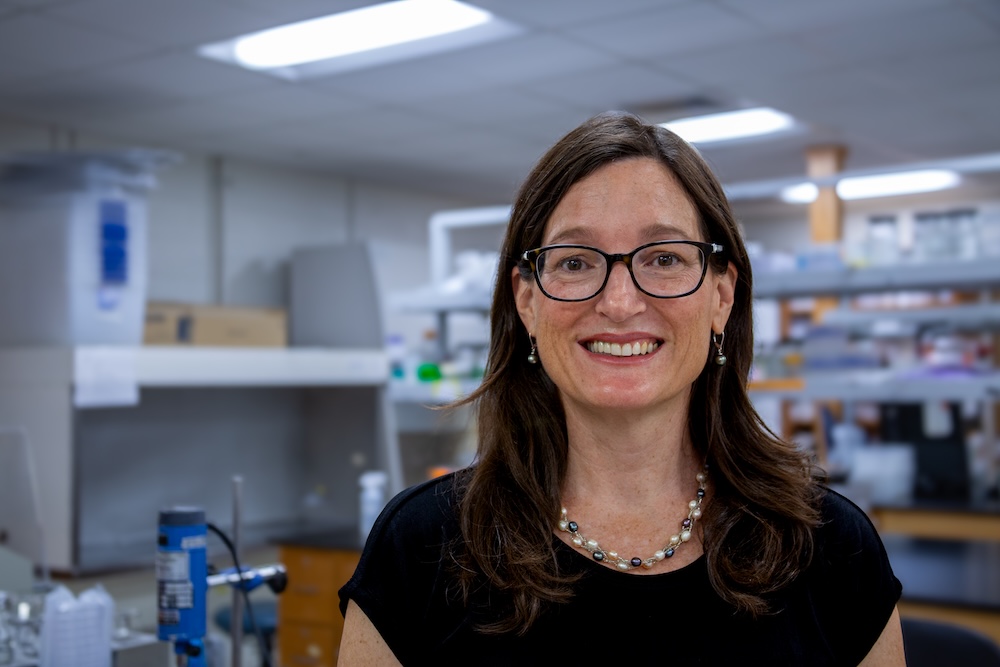
The Vidalia onion. Beloved across the country — so much so that it garnered a $200 million farm gate value in 2022 — but only grown in 20 counties surrounding the town of Vidalia in southeast Georgia, where special soil properties produce a sweet onion that is even sweeter.
The conditions that make this region good for growing are also optimal for a wide range of plant pests and diseases. Onion diseases that occur in production fields can cause severe economic losses to onion growers by reducing the yield and quality of marketable onions.
“Georgians are very proud of Vidalia onions. The growers have great success with current management models and technology, but with more innovative technologies, we can make the great even greater,” said Luan Oliveira, assistant professor in the Department of Horticulture at the University of Georgia College of Agricultural and Environmental Sciences (CAES).
A multidisciplinary team of UGA researchers aims to enhance the competitiveness of Vidalia onion growers in Georgia by providing them with the ability to confidently detect onion diseases early, enabling them to make management decisions on their crop at a critical time. These abilities, researchers say, should result in increased yield and quality of marketable onions and an overall increase in efficiency and productivity.
Guoyu Lu, assistant professor at the UGA College of Engineering, is the principal investigator on the three-year project. Lu is joined by Oliveira, who also serves as the precision agriculture specialist for UGA Cooperative Extension, and Bhabesh Dutta, professor in the CAES Department of Plant Pathology and UGA Extension vegetable disease specialist.
“What makes this project especially interesting is the partnership between CAES and the College of Engineering that is fostered through the UGA Institute for Integrative Precision Agriculture, the integrated team — research and Extension faculty, county agents and farmers — and the use of AI to detect onion diseases,” said George Vellidis, professor in the CAES Department of Crop and Soil Sciences and institute faculty.
Disease detection limited by lack of technology and large field sizes
Detecting and identifying diseases creates many challenges for Georgia’s Vidalia growers. Farmers and their consultants detect and identify diseases by walking through fields. Because many fields are large, scouting every row is a major efficiency challenge. Producers often scout small areas within a field to save time, but this method leaves most of the field unchecked.
When a disease is detected, sprays — either curative or preventive — are applied to the entire field as a precautionary measure because the extent of disease distribution cannot be easily determined.
“Farming is a very tedious and costly job — it can be tiring work with many uncertainties,” Lu said. “I wanted to develop something that can help the farmers save their labor and time, ultimately making their jobs easier.”
Lu and the research team, along with three leading Vidalia sweet onion growers, will apply artificial intelligence and machine learning to create a series of disease management decision support tools (DSTs) for the Vidalia sweet onion.

SmartDetect app, other AI-powered tools boost disease detection and prevention
Combining data collection and analysis with plant pathology, precision agriculture and robotics, the team will build a photographic library of the foliar symptoms caused by onion diseases and other physiological disorders, feed them into the AI software, and use machine learning to identify the diseases based on pattern and color recognition from the images.
“Our disease management DSTs will range from smartphone apps to robotic solutions that will enable growers and their consultants to scout entire fields rapidly and target prophylactic and curative sprays to areas in the field where disease may be emerging or has emerged,” Lu said.
Growers and their consultants will be able to use the SmartDetect app to identify diseases that can be difficult to pinpoint without specialized knowledge or equipment, including bacterial leaf blight, pink root or onion smut.
“In addition, the SmartDetect app can be used to track disease outbreaks over time and in different locations,” Lu said. “By collecting data on the prevalence and severity of different diseases, growers can make informed decisions on how to manage their crops and prevent future outbreaks.”
Another advantage of using robots in onion fields is their ability to collect data on plant health and growth. By using sensors and cameras, robots can collect information on factors such as soil moisture, nutrient levels and plant health.
Improving profits for Georgia onion growers
The project aims to enhance the competitiveness of Vidalia sweet onion growers in Georgia through increased efficiency and profitability. Enabling growers to confidently detect onion diseases early and target disease management will increase the environmental sustainability of Vidalia sweet onion production by reducing the volume of pesticides used to grow the crop.
The project, awarded in late 2023, has just completed its first year and will be complete in September 2026. The team will now send all data to the app developer for disease recognition and localization. Lu and his colleagues hope to expand the technology to other crops in the future.
“As an Extension specialist, my job is taking this research back to the farmers,” Oliveira said. “Having something tangible to support our producers in Georgia is incredibly exciting.”
Learn more about research projects within the UGA Institute for Integrative Precision Agriculture at iipa.uga.edu.






